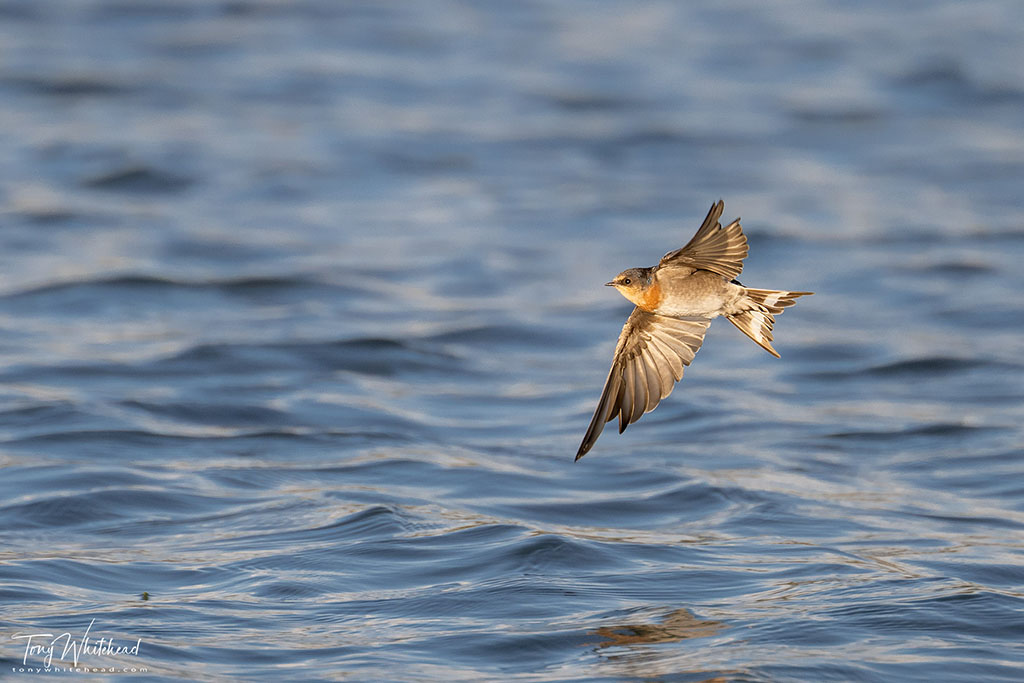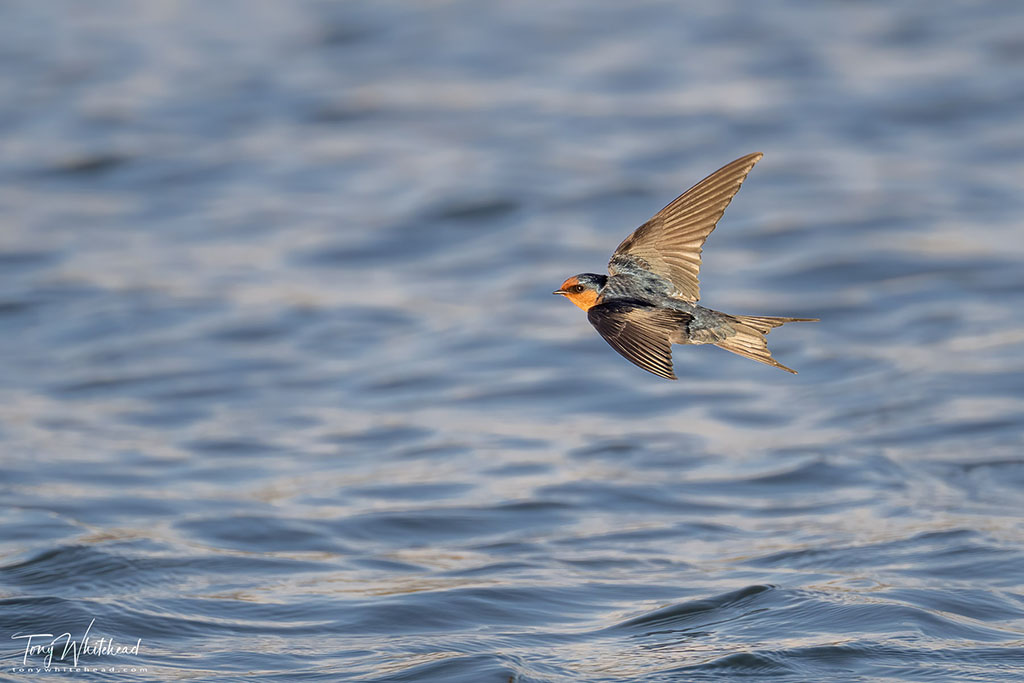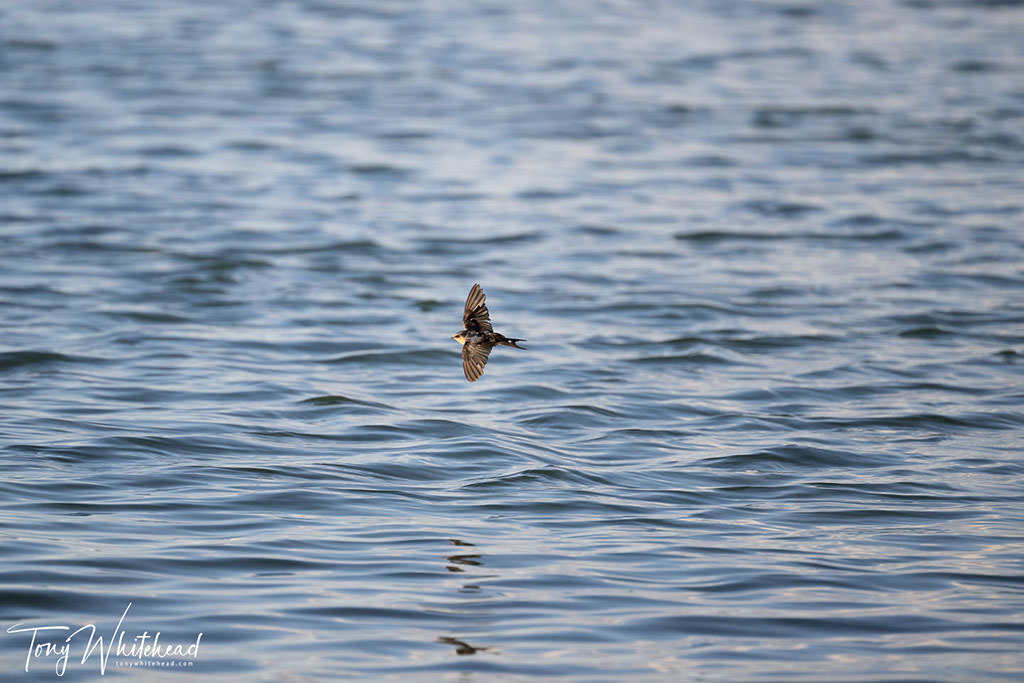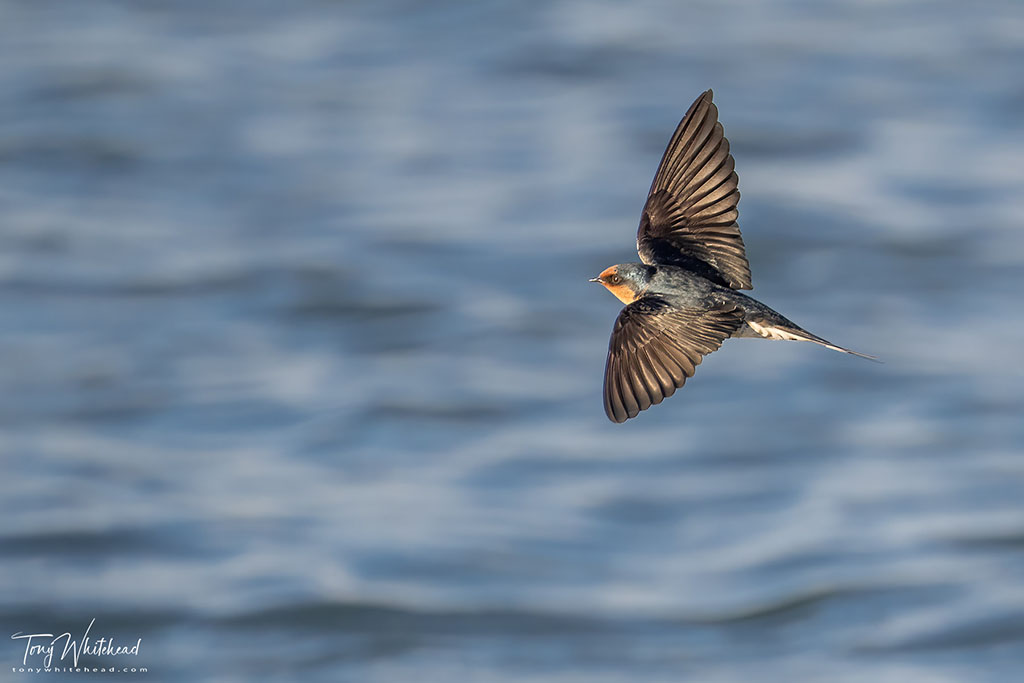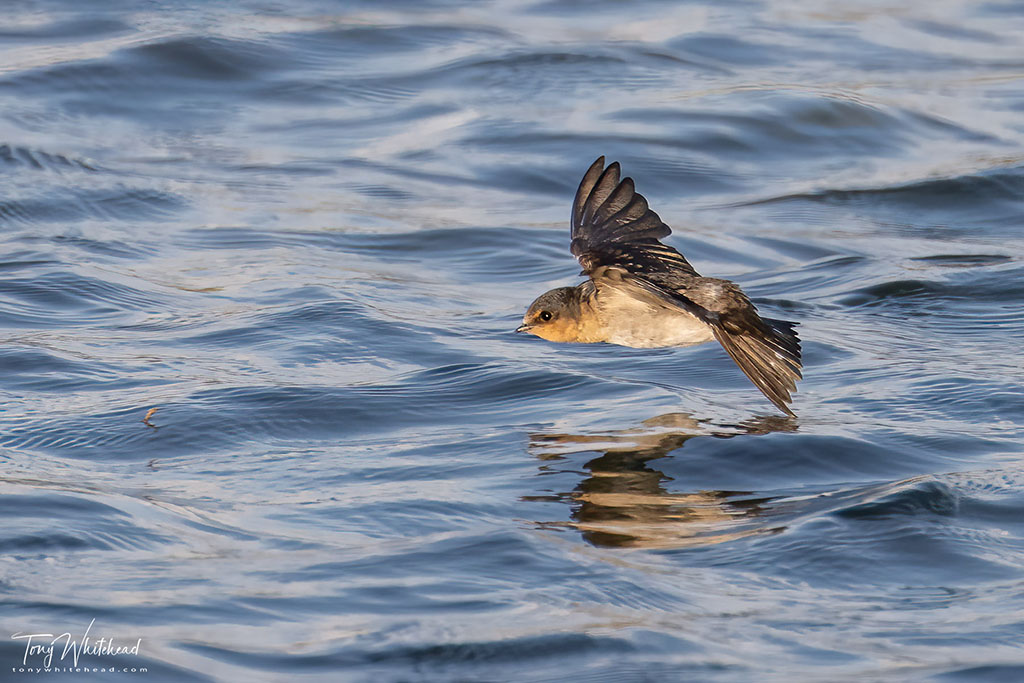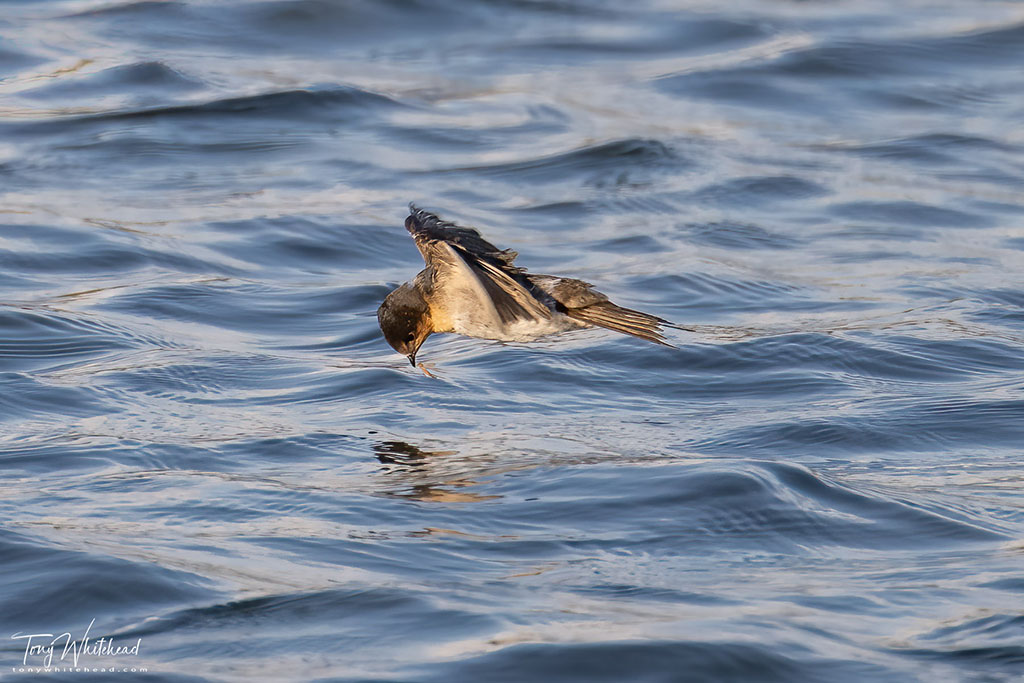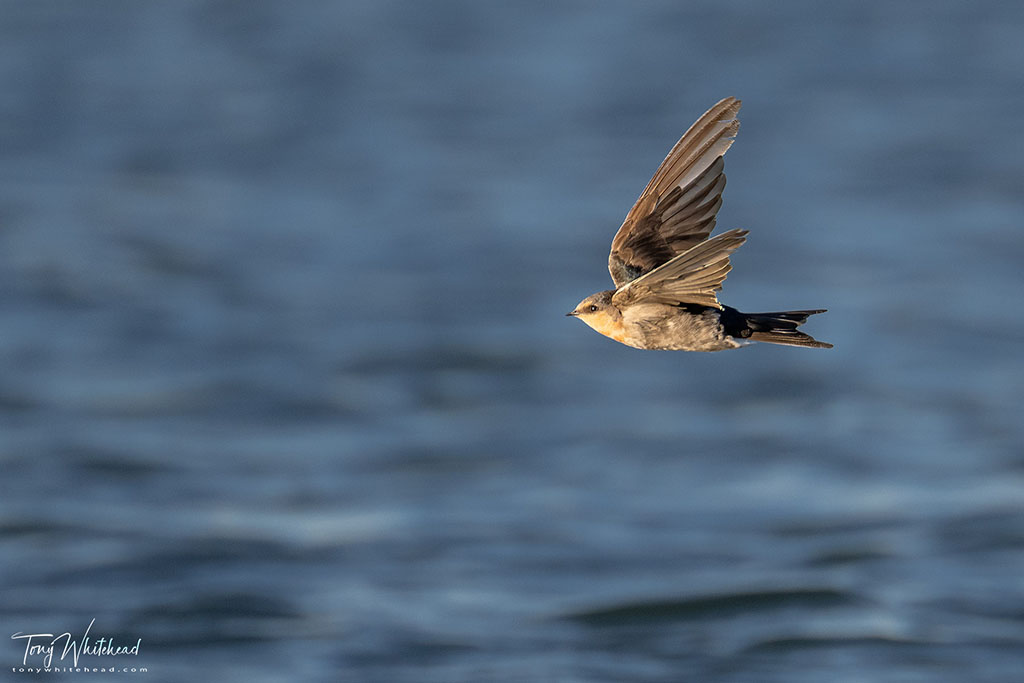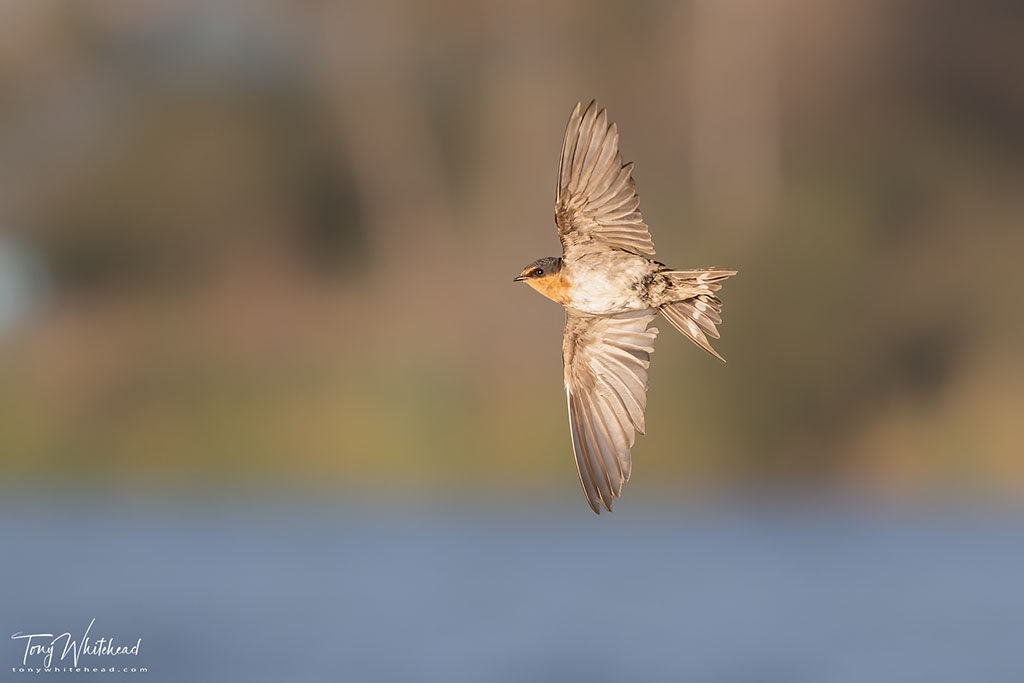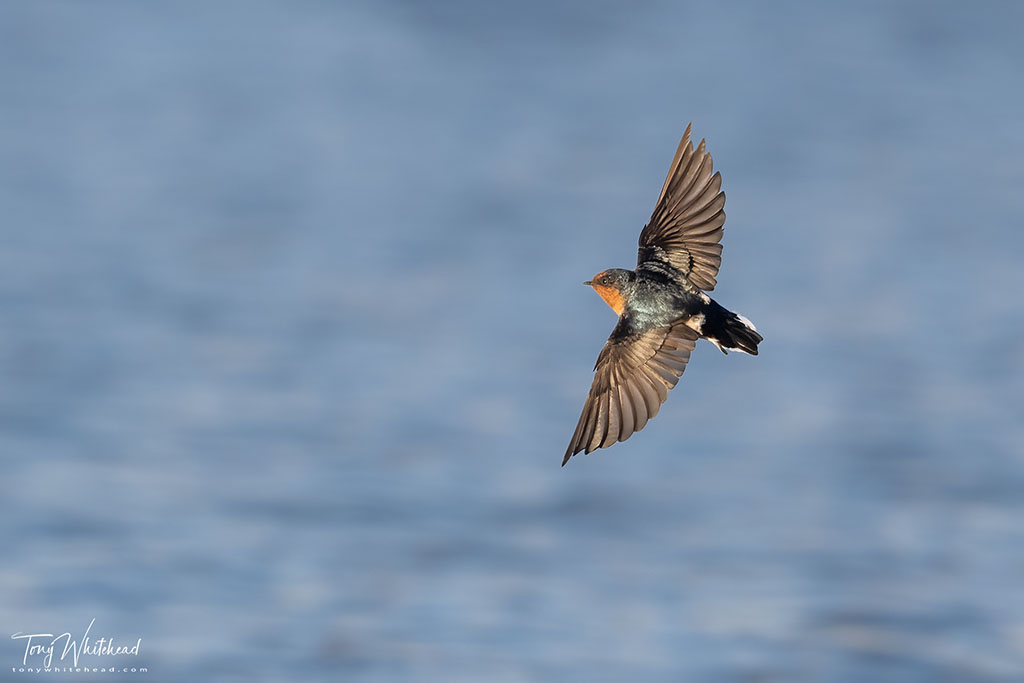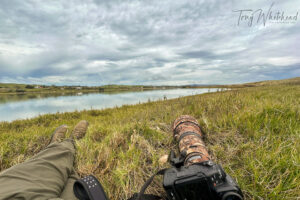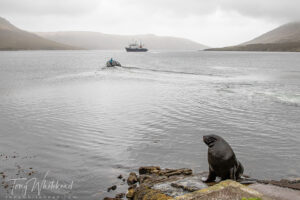Following on from last week’s post, I have had a brief opportunity to do a little more testing with the Nikon Z9 photographing swallows in flight. Conditions were not perfect with the wind being about 90 degrees off but there were some opportunities to do the testing and achieve some reasonable images.
I began using the Nikkor Z 100-400mm f4.5-5.6 S as the birds were not flying as close as I would have liked due to the wind direction. My initial impression on this occasion was that the Z9 was locking focus on the birds more easily than before. Previous attempts have been in quite flat lighting so the contrast between bird and background was less marked. As long as the swallows were relatively large in frame the focus would lock rapidly and hold tenaciously. This next image shows the size of the bird in frame to achieve easy focus.
This has highlighted to me that part of the issue I have had is having to work in a different way than I used to with my Nikon DSLRs. My past approach was to locate the bird while quite small, achieve focus (if needed by pumping AF-On repeatedly until achieved). I would then track the bird until close enough to begin firing the shutter. This was partially due to the time required to achieve focus. With the Z9 I find the camera has trouble locking on birds small in the frame but when larger in frame locks much more quickly. Trying to lock on distant birds is an exercise in frustration but is unnecessary as focus lock is quick once they are closer. By waiting until they are closer before attempting to focus the whole process works at least as well.
An advantage of the Nikon Z9 AF system is the visual confirmation of focus. Once locked a green focus box lights up around the subject and tracks it across the frame. With a DSLR I had to rely on the image looking visually sharp in the viewfinder. Reviewing images as I shot I could see that I was achieving very good rates of sharp images. The 20 fps frame rate also enabled capture of some nice feeding sequences as the swallows were dipping for emerging midges.
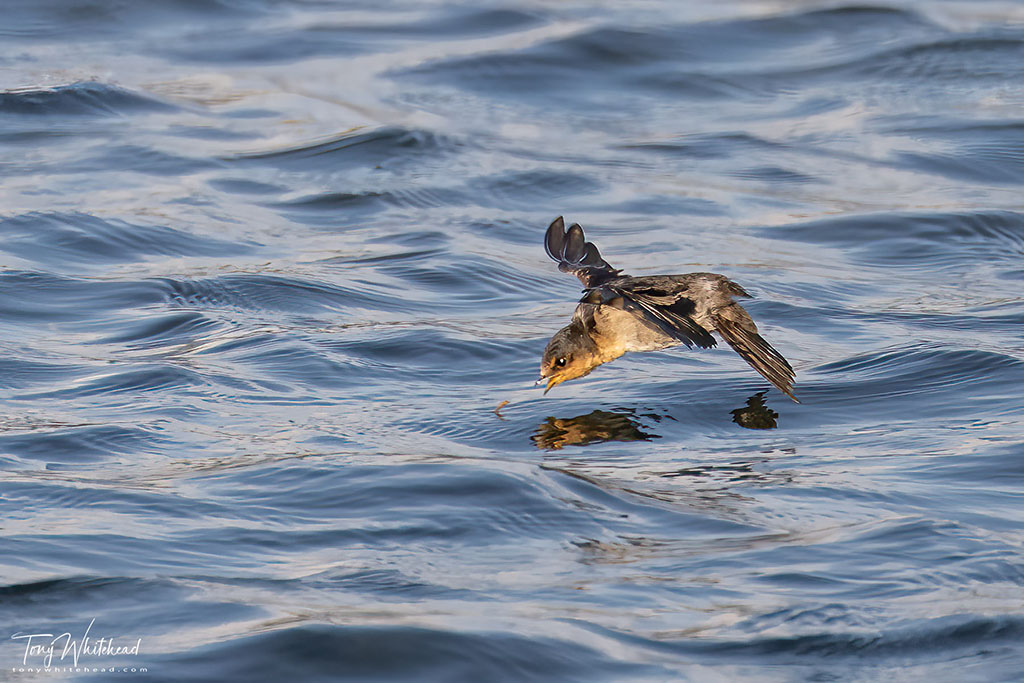
After using the 100-400 for a while with good results I changed to the Nikkor 300mm f4PF on the FTZii adaptor. This seemed to be less successful at acquiring and locking focus on the flying swallows. This initially surprised me but what I realised was that as I was photographing the birds at the same place, they were smaller in the frame at 300mm as opposed to 400mm. Once I changed and waited to photograph the closer but less frequent birds focus was again achieved quite effectively. This just reinforces the impression that the subject needs to be a certain size in frame to reliably achieve focus.
In my last post I expressed the opinion that for swallows in flight I would have most confidence in using a Nikon D500 with the 300mm f4PF. After my recent test my confidence in using the Nikon Z9 with 100-400mm is much higher to the point that I would probably favour the mirrorless combination, even though larger and heavier. The DSLR still wins in terms of size and weight and remains an extremely capable setup especially when needing compact gear for travel.
These next three images were taken with the Nikon Z9, Nikkor AF-S 300mm f4PF and FTZii showing that F mount lenses work beautifully without issue on the Z cameras.
This final pair of images show a swallow hawking an insect in flight despite the challenge of a moulted tail limiting mobility in flight.
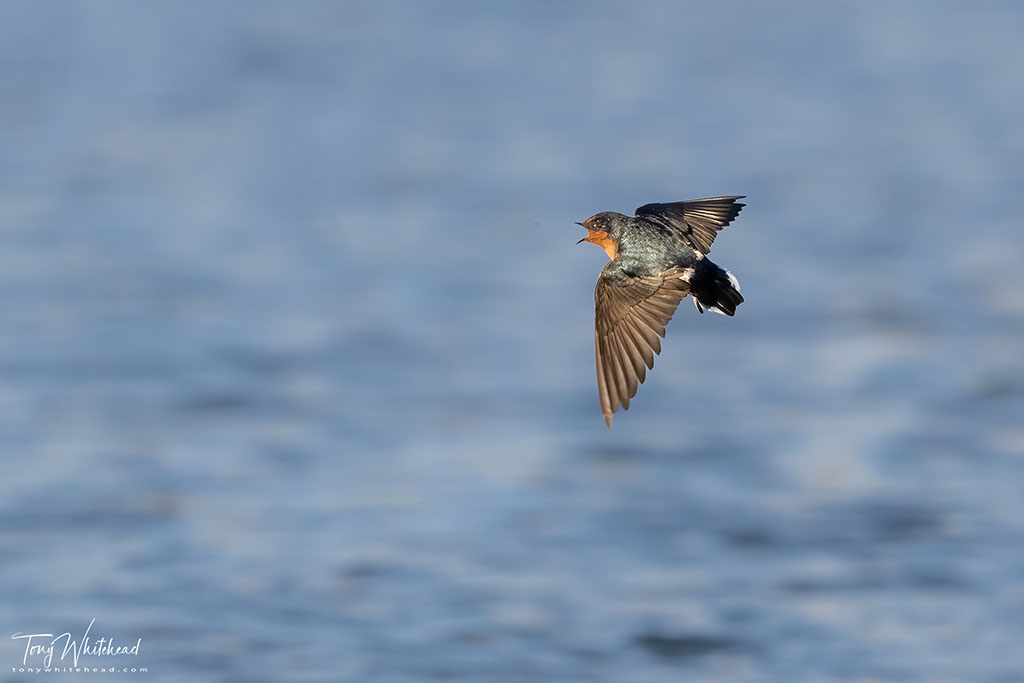
All photos were with the Nikon Z9 set to continuous AF activated by the AF-on button, wide area (large) AF with animal face/eye recognition on. Z9 firmware version 1.00.
I am looking forward to trialling with firmware version 2.00, especially the new wider AF area modes as I think these may be useful in acquiring focus more easily with erratic subjects. The Pre-release Capture sounds interesting but is severely limited by only being available for jpeg images at 30fps or 120fps. I see no reason that it could not be applied to RAW capture as the buffer should easily manage 20 RAW files, especially with a fast CFExpress card to off load to once the shutter is triggered.
